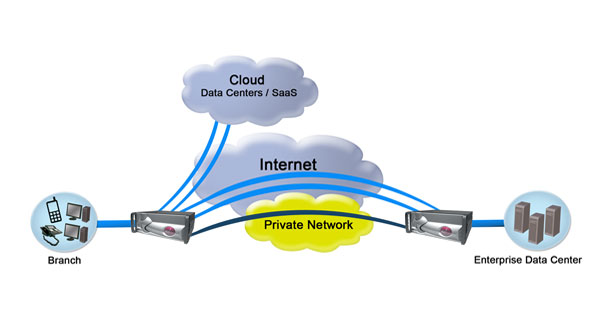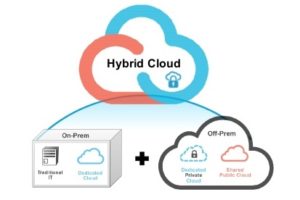SD-WAN Growing Use Cases for the Cloud
SD-WAN: Growing Use Cases for the Cloud
It’s remarkable how fast software-defined wide-area networking (SD-WAN) has gained momentum. Many people ask why. The answer is: SD-WAN is expanding the functionality of automating and management access to cloud applications.
The primary trigger for the growth and interest in SD-WAN is the shift, over the past decade, of a massive amount of applications to the cloud (both private and public). Networks in the client-server era were built to access applications that were housed either at an enterprise site or, more rarely, in a private data center. But the cloud shifted the game — creating the need for fast access to applications wherever they reside, including the cloud when accessed across the Internet.
Cloud Connection Challenges
From the CIO or CTO’s perspective, cloud has many benefits but also presents many challenges from the network and security point of view. Cloud applications can speed the velocity and agility of IT, enabling your workforce to connect and build on new applications on demand.
But the challenge is that you need to build a new infrastructure to support these cloud applications. There are several challenges to connecting your workforce to this new world of agile cloud applications. Here are a few:
Application Performance: Cloud means there are many routes for workers to connect – and generally they do so using the network, not always under control of the corporate network. They could be using Internet broadband to connect to a cloud application or they might be on a corporate WAN. SD-WAN technology can add network intelligence to the corporate WAN to recognize which applications are being accessed and connect them in the most efficient, cost effective way. It can provide Internet breakout to make sure that general Internet traffic is not routed through expensive private data-center connections (such as MPLS). And furthermore, SD-WAN technology can be used to connect directly to recognize the most common cloud applications (Microsoft Office 365, Salesforce), and connect to application-specific gateways that speed up applications access.
Security: With the increased use of the Internet and cloud technologies, it’s harder for IT staff to assure security when employees are using the network to connect to the cloud. SD-WAN can enable additional network visibility and security functions that assure that cloud applications are being accessed in a secure way. More importantly, by enabling network branches and endpoints with SD-WAN, IT staff can gain more insight into how the networks are being used and implement security policies.
Agility and Automation: In the hardware-based WAN world, networks were connected with complicated hardware configurations and leased lines, making changes to the network topology and architecture difficult. In order to connect to the cloud, a more responsive network is needed to gain control and visibility over cloud connections. With SD-WAN, networks can be more quickly orchestrated and changed using software, increasing the speed with which IT and networking staff can respond to changing business demand. In addition, SD-WAN deployments can often be set up using software-based automation tools such as templates.
End-User Attraction: Making Life Easier
What’s most powerful about SD-WAN is that it has the potential to solve several of these challenges at once, by providing an integrated, software-driven platform for automating network policy and applications.
Cloud applications mean that traffic flows within the network have drastically changed and become inefficient. The technology to handle these new traffic flows is embedded in many SD-WAN platforms.
SD-WAN emerged with a few use cases anchored to the need for fast cloud access, but those use cases are now expanding, according to Futuriom research. That is because the WAN is a key enabler — and also possibly stumbling block — for cloud applications.
So how exactly does SD-WAN do that? The MEF, a global industry alliance comprised of more than 150 networking technology and service-provider organizations, is working to reduce the confusion surrounding SD-WAN technologies and solutions. As part of their work the MEF has identified the following as being fundamental capabilities of SD-WAN managed services:
- Secure, IP-based virtual overlay network
- Transport-independence of underlay network
- Service assurance of each SD-WAN tunnel
- Application-driven packet forwarding
- High availability through multiple WAN links
- Policy-based packet forwarding
- Service automation via centralized management, control and orchestration
- The MEF also identified some value-added services that are beyond the fundamental SD-WAN service offering. This includes WAN optimization and advanced security services.
These expanding capabilities of SD-WAN show why it’s growing so fast – it’s become the Swiss army knife of WAN automation and management. This is why IT and network managers have taken a liking to the approach is that streamlines the management of many of challenges posed to given users a better experience in connecting to the cloud.
FatPipe Networks has been developing and delivering traffic management solutions for over 17 years and was “SD-WAN before SD-WAN was cool”- Gartner. With 12 seminal patents and a comprehensive suite that addresses any SD-WAN need, FatPipe Networks is a must for any WAN administrator considering or updating their WAN traffic management needs



